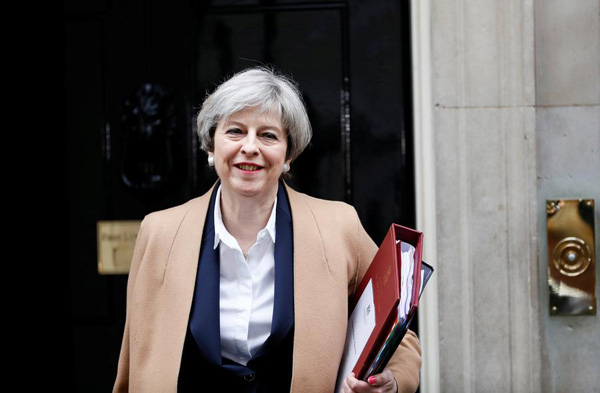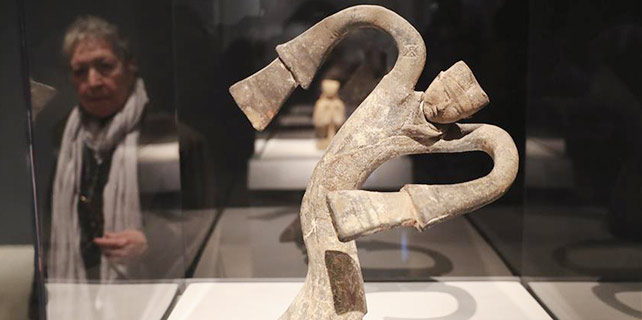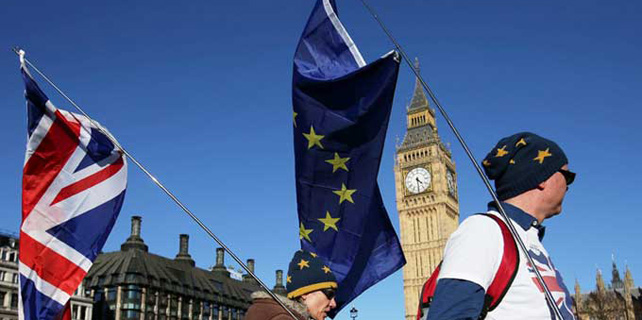UK takes key step in process of leaving the European Union
The United Kingdom took its first concrete step toward leaving the European Union when it formally notified the president of the European Council of that intention on Wednesday afternoon.
|
 |
|
Britain's Prime Minister Theresa May leaves 10 Downing Street in London, March 29, 2017. [Photo/Agencies] |
The formal notification triggers a two-year period of intense and complex negotiations and equally complex period of ratification by the European Parliament and the European Council and it is possible that all 27 national parliaments will also have to ratify the deal.
British Prime Minister Theresa May confirmed the dispatch of the notification to Parliament in London on Wednesday. "The Article 50 process is now underway. The UK is leaving the EU.
"It's a historic moment and there can be no turning back … We are going to take control of the things that matter most to us."
May emphasized that she will seek to build a deep and special partnership with the EU in the interests of both parties, as she struck a more conciliatory tone toward the EU.
The process of ending the 44-year relationship with Brussels began on Tuesday afternoon when May signed the letter which invoked Article 50 of the Treaty of Lisbon, which created the European Union. The six-page letter was then given to the UK's ambassador to the EU, Sir Tim Barrow, who travelled to Brussels on Tuesday night before giving it to Donald Tusk, the president of the European Council, just before1:30 pm local time on Wednesday.
On receipt of the letter, Tusk tweeted: "After nine months, the UK has delivered #Brexit."
Later he said that he could not pretend that it was a happy day but emphasized that nothing had yet changed in the UK's relations with the EU. "We will act as one and start negotiations by focusing on arrangements for an orderly withdrawal," he said.






















